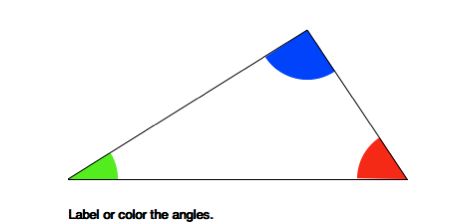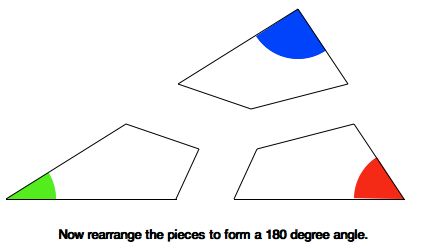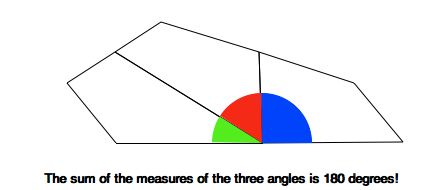Software: GeometerŐs Sketchpad
The purpose of this activity is to discover some
properties about the interior angles of a triangle
using GeometerŐs Sketchpad.
Launch the program Geometer's Sketchpad by double
clicking on its icon. After the GeometerŐs Sketchpad
window appears, go to the Display menu and
choose Preferences. Make sure that the Autoshow
Labels for Points is checked.
Construct a triangle.
1. Place 3 points in the Sketchpad Window.
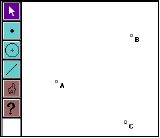
- Click on the point tool. Move the pointer to the sketch window. The pointer changes to a cross hair shape. Click anywhere in the sketch plane. You should see point A appear.
- Move the pointer in any
direction and repeat the process until you have points
A, B, and C appear in the window. Notice that point C
is highlighted (or selected). You can de-select that
point and select a different point by moving the
crosshair and clicking on another point.
2. Construct line segments
AB, BC, and CA.
- Choose the pointer tool and click on A.
- While holding down the shift key, click on point B. Points A and B should be highlighted.
- From the Construct menu choose the Segment command. You should see line segment AB.
- Unhighlight (de-select) the two points. This can be done by clicking the mouse somewhere on the plane outside the construction.
- Repeat the process for
the other two sides.
Measure the interior
angles.
1. Highlight angle ABC. (While you hold down the
shift key, click on the points A, B and C - in that
order. ) Go to the Measure menu and choose Angle.
The Sketchpad will print the angle measure for ABC in
the window. Repeat for the other two angles.
2. Use the Calculate command in the Measure
menu to find the sum of the interior angles.
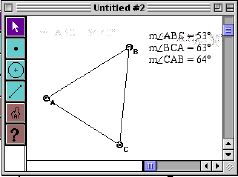
- Highlight the 3 measurements. (Hold the shift key down and click on each measurement.)
- Choose Calculate...
from the Measure menu. A calculator appears.
Choose the angles from the values menu.

After you click OK, you should see
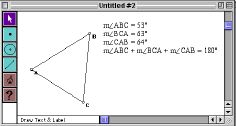
3. Drag one the vertices. What do you notice? (the angle
measurements dynamically change while the sum of the
angles stays the same. In other words, the sum of the
interior angles of a triangle always equals 180
degrees.) Why does that work?
https://complete-concrete-concise.com/mathematics/demonstrating-that-the-angles-in-a-triangle-sum-up-to-180-degrees/
https://www.youtube.com/watch?v=k0MLhzZK-SM
Watch Brian McCall show you this demonstration in the first minute and half of this video.
https://www.brightstorm.com/math/geometry/triangles/triangle-angle-sum/
